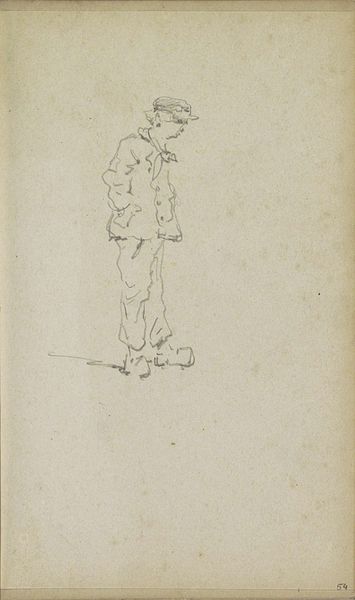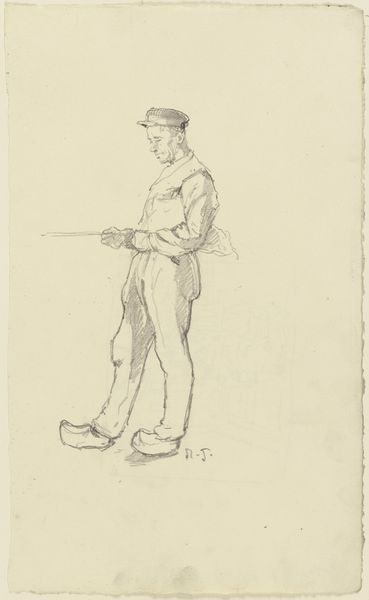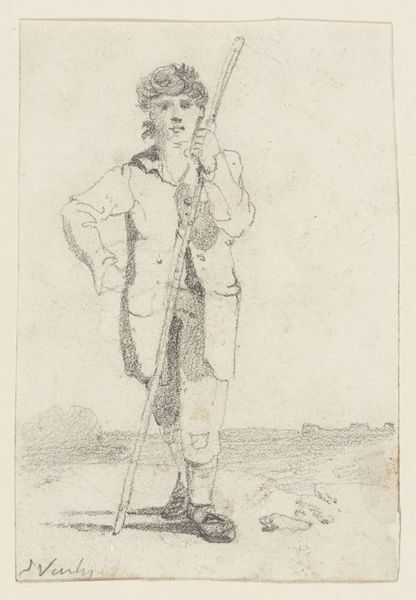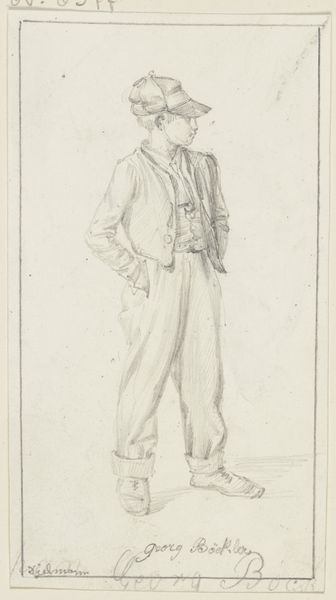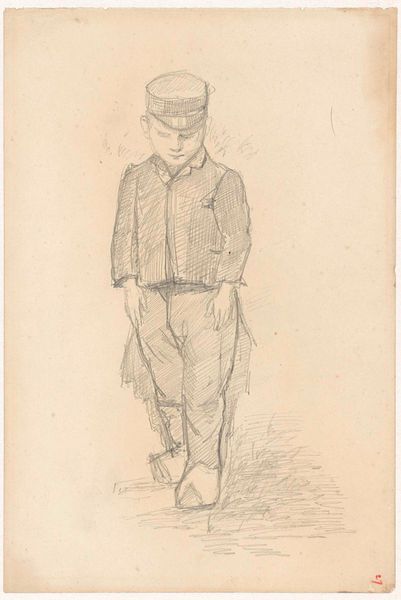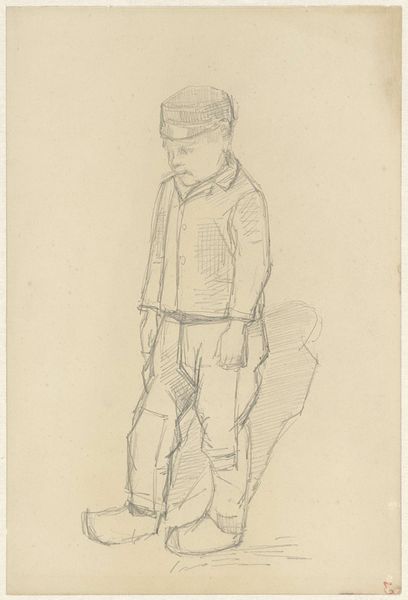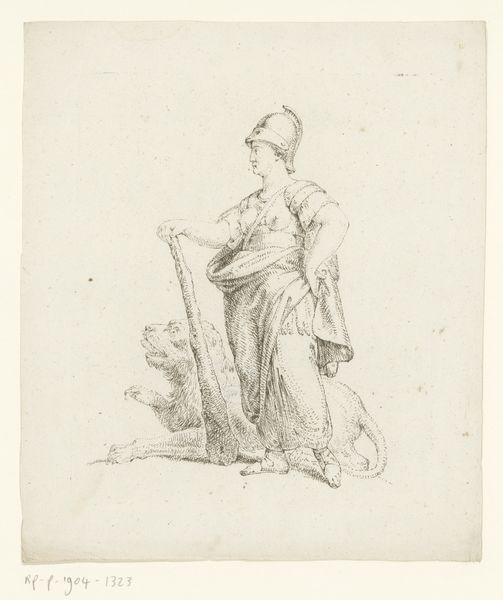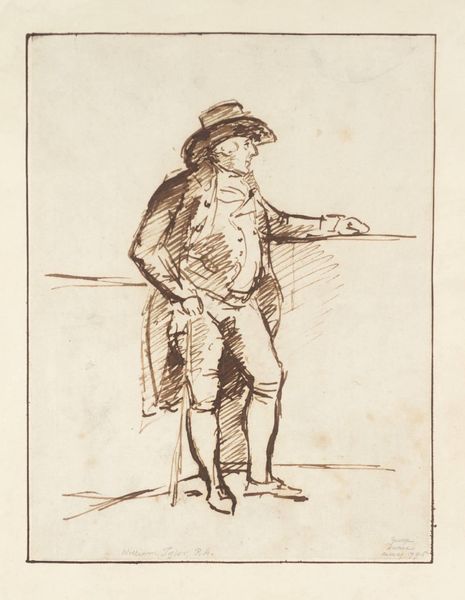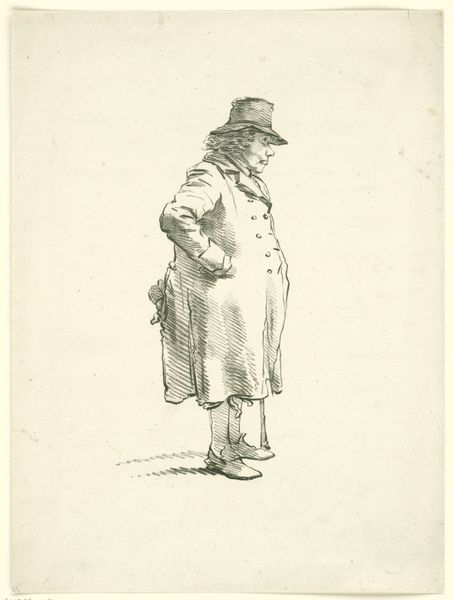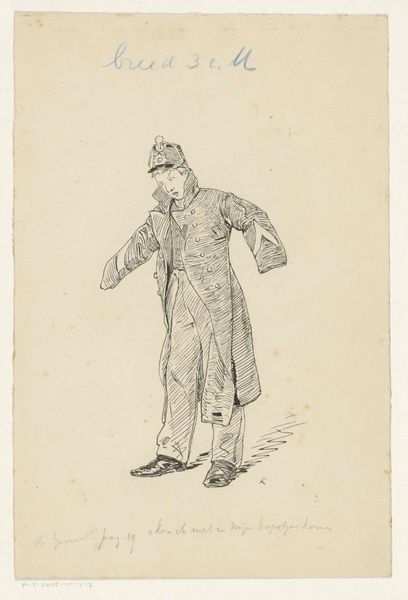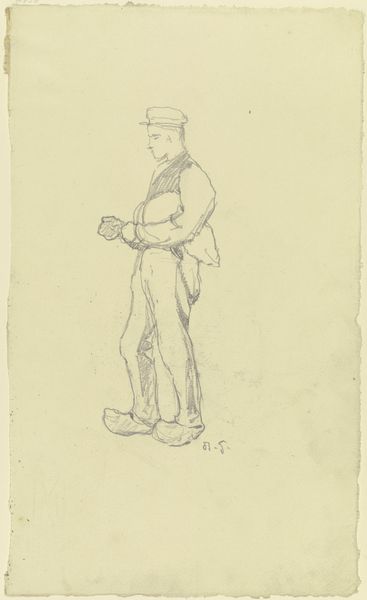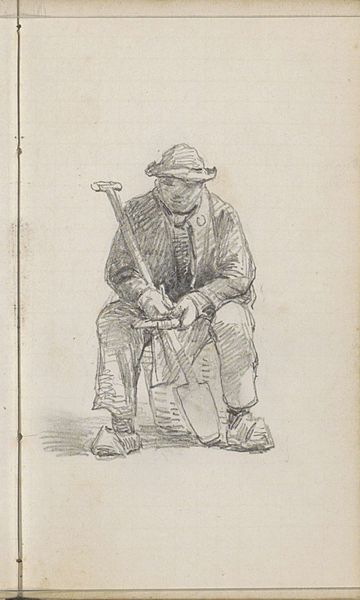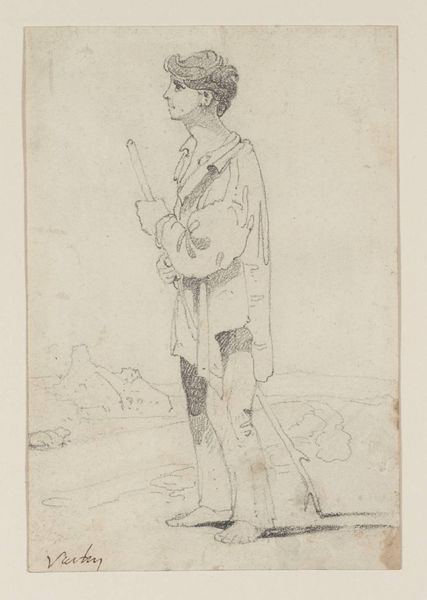
drawing, pencil
#
portrait
#
drawing
#
landscape
#
pencil
#
realism
Copyright: Rijks Museum: Open Domain
This pencil drawing by Johannes Tavenraat depicts a farmer in Westerlo. His hands are tucked into his pockets, a gesture of humble resignation, echoed in countless images of laborers across centuries. Consider, for instance, the ancient Roman statues of farmers, their hands similarly hidden, a sign of deference or perhaps a quiet strength rooted in the soil. This motif evolves through medieval depictions of serfs, their posture mirroring this sense of being grounded, both physically and socially. Even in van Gogh's portraits of peasants, we see echoes of this gesture, a visual shorthand for a life of labor. Psychologically, this posture can be interpreted as a form of self-containment, a withdrawal into oneself amid the harsh realities of rural life. This resonates with our collective memory of the working class, a subconscious understanding of their resilience and quiet dignity. The church in the background is not a coincidence, its spire acts as a sign of faith and resilience, engaging us on a deep, subconscious level. This symbol of the hidden hand, this posture of the common man, is a testament to the enduring power of visual language, a cycle of meaning constantly resurfacing, evolving, and taking on new significance.
Comments
No comments
Be the first to comment and join the conversation on the ultimate creative platform.
